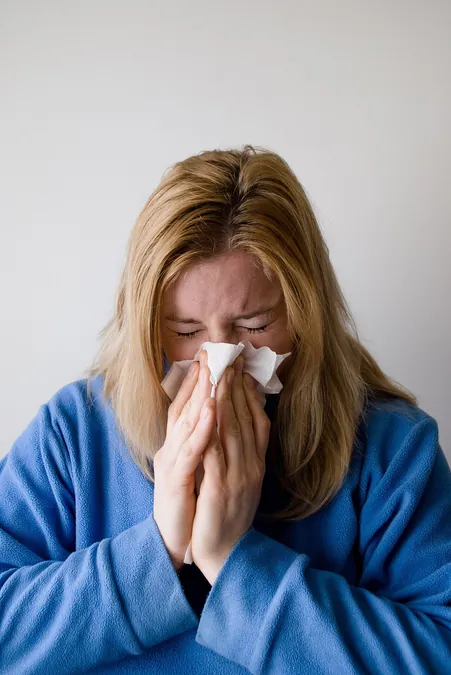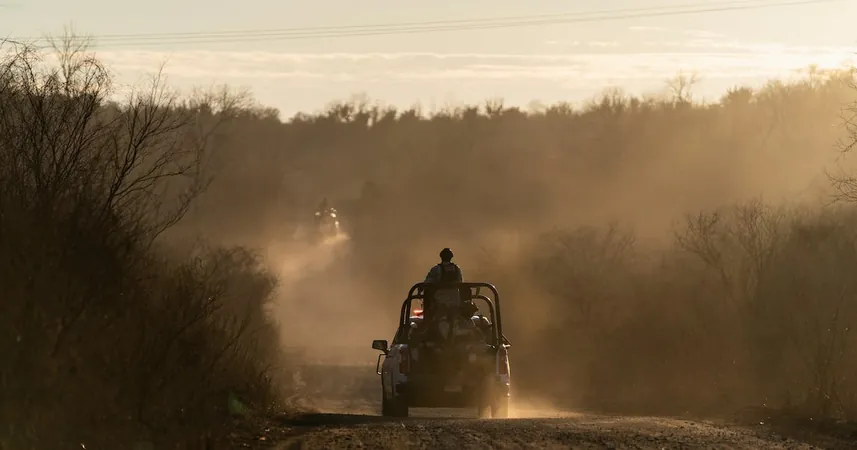
Respiratory Illness Surge: The Alarming Rise of COVID, Flu, and RSV Across the U.S.
2025-01-14
Author: Charlotte
Introduction
As we transition into the colder months, an alarming increase in respiratory illnesses is sweeping across the United States, leaving many grappling with persistent colds and flu-like symptoms. Recent data from the Centers for Disease Control and Prevention (CDC) reveals that the activity level for respiratory illness in the country is currently marked as 'high,' with numbers showing a troubling rise in cases of COVID-19, influenza, and respiratory syncytial virus (RSV).
Current Hotspots
Notably, certain states have emerged as hotspots for these infections. The latest CDC report highlights that Arizona, Oklahoma, Kentucky, Hawaii, Delaware, and New Hampshire are experiencing exceedingly high rates of respiratory illnesses, causing significant numbers of doctor visits. Meanwhile, states like Montana, North Dakota, and Washington are still grappling with moderate levels of illness.
Variants and Their Impact
The surge in cases is primarily attributed to the spread of new variants, particularly the KP.3.1.1, referred to as the FLiRT variant, and the XEC variant, which originated in Europe. Data indicates that while XEC was responsible for a mere 17% of cases back in October, it now accounts for nearly half of new COVID-19 infections. Despite this increase, COVID-19 cases remain lower compared to flu and RSV, which are classified as 'high' and 'very high,' respectively.
Impact on Younger Populations
Interestingly, the impact of these respiratory illnesses is disproportionately felt among younger populations. Nearly 20% of emergency room visits stem from children under the age of 4, highlighting the vulnerability of this age group during the respiratory virus season. Flu-related hospital visits are currently most pronounced among children aged 5 to 17, mirroring trends observed in previous years.
Vaccination Concerns
As the season progresses, there's concern over vaccination rates, which are considered alarmingly low this year. The report reveals that only 11% of children have received the latest COVID-19 booster, and just 22.8% of adults aged 18 and older have been vaccinated against COVID-19. For the current flu season, less than half of children and a comparable percentage of adults have received their flu shots. Even more concerning is the RSV vaccination rate, with only 44.5% of adults over 75 having ever received it.
Conclusion
Health officials emphasize that many individuals—both children and adults—lack vital protections against these respiratory viruses due to insufficient vaccination coverage. As we brace for the residual effects of COVID-19, flu, and RSV this fall and winter, it’s crucial for families to consider vaccination and preventive measures seriously. With hospitalizations expected to peak higher than pre-COVID levels, the importance of awareness and community health cannot be overstated. Are you and your loved ones protected? Get informed and take action—your health depends on it!









 Brasil (PT)
Brasil (PT)
 Canada (EN)
Canada (EN)
 Chile (ES)
Chile (ES)
 Česko (CS)
Česko (CS)
 대한민국 (KO)
대한민국 (KO)
 España (ES)
España (ES)
 France (FR)
France (FR)
 Hong Kong (EN)
Hong Kong (EN)
 Italia (IT)
Italia (IT)
 日本 (JA)
日本 (JA)
 Magyarország (HU)
Magyarország (HU)
 Norge (NO)
Norge (NO)
 Polska (PL)
Polska (PL)
 Schweiz (DE)
Schweiz (DE)
 Singapore (EN)
Singapore (EN)
 Sverige (SV)
Sverige (SV)
 Suomi (FI)
Suomi (FI)
 Türkiye (TR)
Türkiye (TR)
 الإمارات العربية المتحدة (AR)
الإمارات العربية المتحدة (AR)